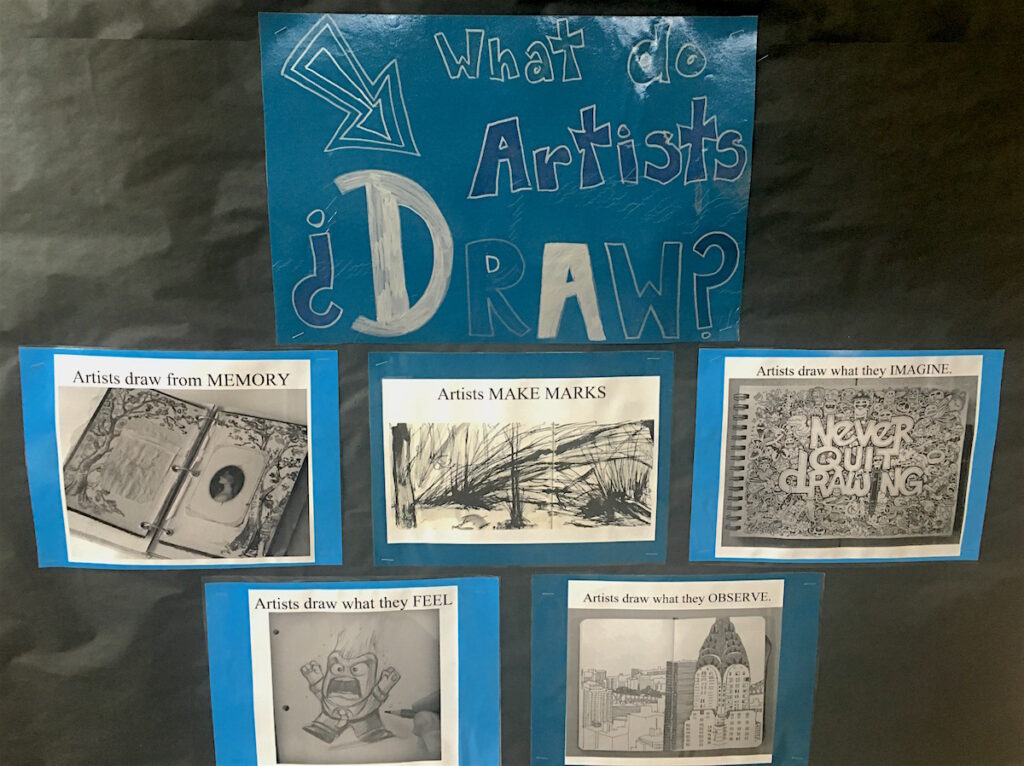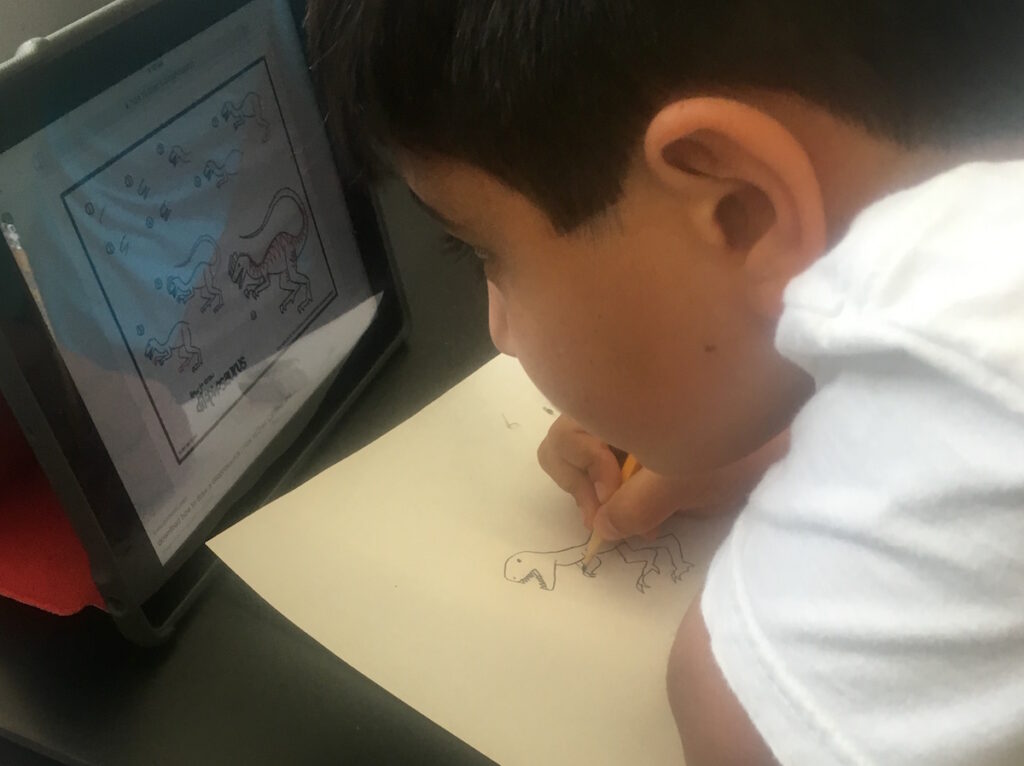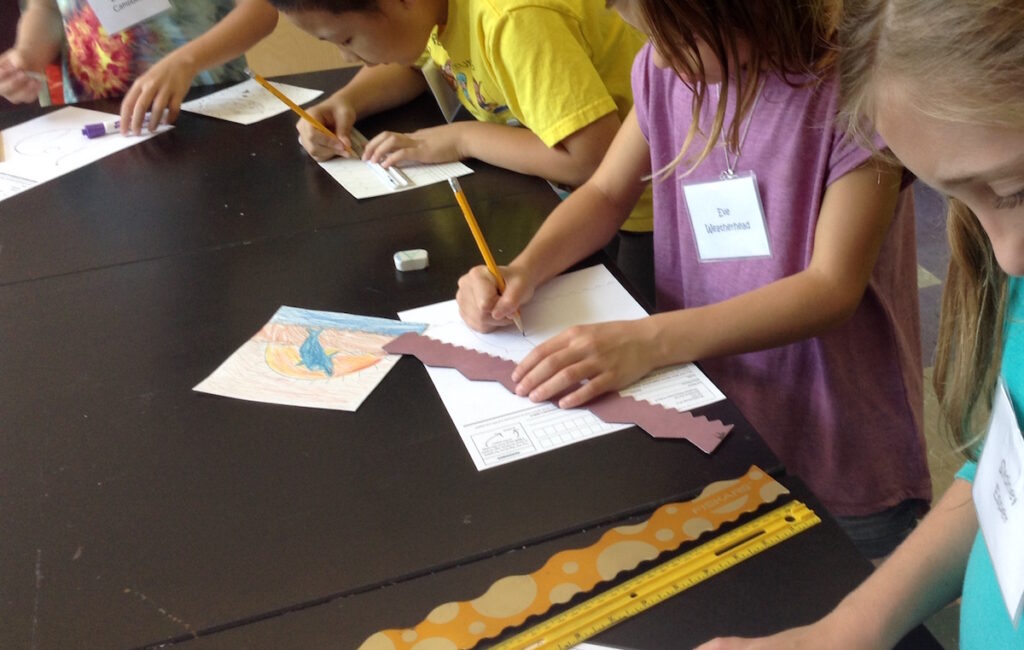I used to philosophically disagree with drawing fundraisers. As a TAB teacher, my classroom is supposed to be a haven of artistic choice and freedom. I struggled with confining my students’ artwork to a tiny square to sell to parents. What did this lesson have to do with my choice-based curriculum and, more importantly, how could I get out of it?
After years of complaining and drudging my way through, I realized I had to find a way to embrace this elementary art tradition. After all, the drawing fundraiser is here to stay and solicits a lot of support for my school’s PTA. Instead of complaining about it, I decided to muster up some altruistic spirit. I could empower my choice curriculum and use my TAB art teacher powers for the good of the community.
Here are 4 tips to run a successful fundraiser in your classroom.

1. Make the fundraiser an early project.
Luckily, most choice-based classrooms roll out centers according to how difficult the materials are to manage. That usually means the drawing center gets introduced first and the collage center gets introduced second. By starting my year out with the drawing fundraiser, I was able to open my start-of-year centers and not let the fundraiser change what I teach.
More importantly, because it takes a few weeks to complete, the project allows my students to establish routines and learn the rules and expectations of the art room before moving on to new centers.
If you’re up for it, many of these fundraisers accept art made with collage materials so you can offer this as an option to your older students. Either way, make the fundraiser work for what you’re already doing.
2. Let students choose their subjects.
For these fundraisers, it seems like a good idea to give kids a theme or subject to focus on. After all, we want parents to buy this stuff, right?
Why not break that habit this year and let students choose their own subject matter? Isn’t part of being an artist generating your own ideas? When students are able to choose their subject matter, they are more likely to engage in the art making process. They may even decide to buy something from the fundraiser for themselves.

This is also a good time to talk about ideas like audience, craftsmanship, and intellectual property. You can ask students questions like:
- Who are you making the art for?
- Is your artwork original?
- Is your artwork well executed?
These are real questions artists ask themselves, so why not get your students thinking that way, too?
3. Don’t be afraid to ask for something in return.
If you’re fundraising for someone other than your own art room, see what you can get back. My school’s fundraiser supports the PTA. In exchange for using my instructional time, they are all too happy to buy me new drawing supplies. At the end of last year when the PTA had some extra money left over, I was the first teacher they thought of to send shopping on Amazon! It never hurts to make friends with the community members that support your school’s mission.
This is also a good time to kick off your parent volunteer program. The same PTA who runs the fundraiser organizes my parent volunteers. This is a HUGE help in a choice-based art room with so many materials. For this project, the PTA makes and prints all of the labels for kids’ artwork, organizes them into folders by classroom, and lightly draws a one-inch border in pencil on all the papers. This saves me hours of prep work and is an easy way to incorporate parent volunteers at the beginning of the school year.
4. Decide what’s best for you.
We TAB teachers are passionate about our philosophy, and I support any teacher who decides drawing fundraisers are not for them. I spent a lot of time looking at reasons not to do them. In the end, you have to do what works for you.
But for now, I have decided that despite being imperfect, drawing fundraisers are not as evil as I first assumed. Is it the best lesson I teach all year? No. But I have been able to rework it into something that fits into my curriculum and teaching style and supports my classroom. It will never be my favorite lesson, but I no longer waste energy hating it.
Whether you’re a seasoned TAB teacher or just starting your journey into choice-based learning, check out the AOE course Choice-Based Art Education. There, you’ll get to explore the power of a student-centered curriculum and learn what works best for you and your students.
Do you do a drawing fundraiser? How do you feel about it?
Do you think there is a place for drawing fundraisers in choice-based or TAB environments?
Magazine articles and podcasts are opinions of professional education contributors and do not necessarily represent the position of the Art of Education University (AOEU) or its academic offerings. Contributors use terms in the way they are most often talked about in the scope of their educational experiences.






